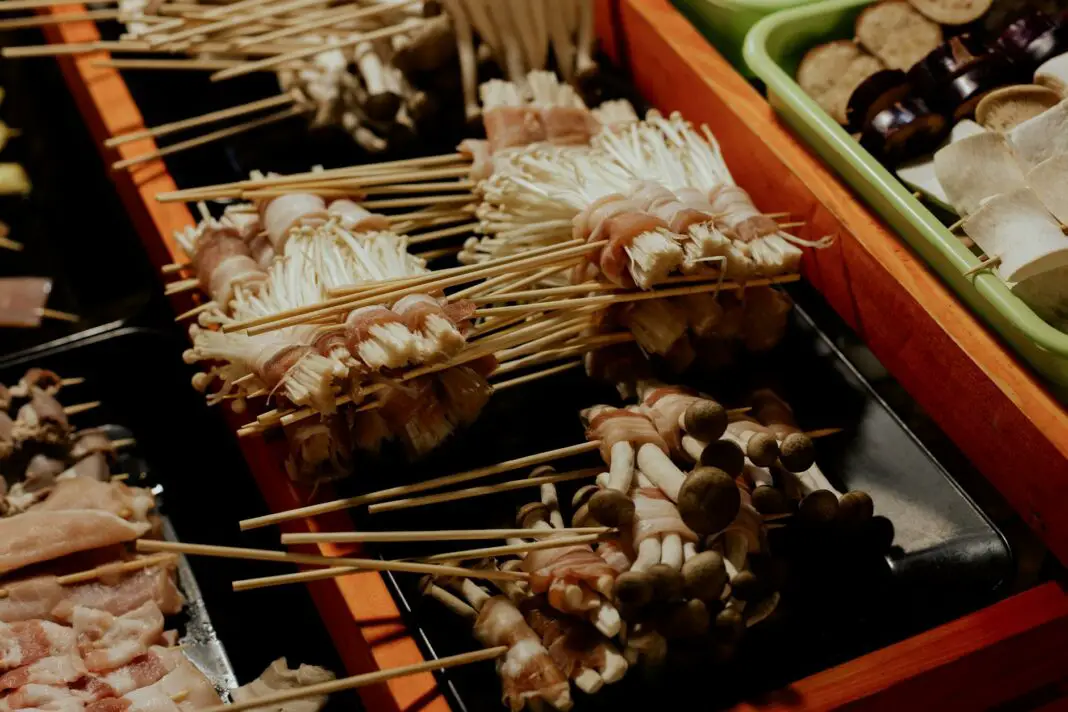Embarking on a trip to Thailand is a vibrant experience filled with rich culture, stunning landscapes, and, of course, tantalizing food. This Southeast Asian paradise is famed for its street food, bustling markets, and the irresistible aroma of spices wafting through the air. One key aspect of authentic Thai cuisine lies in its unique local ingredients. In this blog post, you will discover how these secret ingredients can elevate your Thai cooking at home, allowing you to recreate the magic of Thailand in your own kitchen and impress your family and friends.
From fresh herbs to exotic spices, each local ingredient has a story and plays a crucial role in Thailand’s culinary delights. Whether you are a seasoned chef looking to replicate traditional dishes or a cooking novice eager to try your hand at something new, understanding these unique ingredients will unlock a world of flavors that transform your cooking style. Let’s dive deep into the essential elements that make Thai cuisine so distinctive.
Table of Contents
- Introduction to Thai Cuisine
- Secrets of Thai Herbs
- Spice it Up: Essential Thai Spices
- Unveiling the Magic of Thai Sauces
- Tropical Fruits in Thai Dishes
- Actionable Cooking Tips
- Frequently Asked Questions
- Elevate Your Culinary Adventure
Introduction to Thai Cuisine
Understanding Thai cuisine goes beyond simply mixing flavors. It embodies a philosophy that combines the five elements: spicy, sour, sweet, salty, and bitter, creating balanced, vibrant dishes that tell a story with every bite. Freshness is paramount, as most dishes are prepared using locally sourced ingredients that reflect Thailand’s abundant agrarian landscape. When you embark on a culinary journey through Thailand, you will quickly realize that it is not just about the food; it is about the experience and the ingredients that set it apart from other cuisines.
Digging deeper into Thai culinary secrets reveals a treasure trove of local ingredients. Each region of Thailand boasts its own unique flavors and ingredients that contribute to the diverse tapestry of Thai cooking. From the sizzling streets of Bangkok to the lush fields of Chiang Mai, the variety of local produce and spices imbue each dish with character and depth. Understanding these ingredients is essential, as they are the backbone of every delicious meal you will encounter.
Secrets of Thai Herbs
Herbs are a cornerstone of Thai cuisine, notably enhancing the flavors of dishes. Fresh basil, particularly Thai basil, brings a sweet, anise-like flavor that sets it apart from its Genovese cousin. Its leaves can be tossed into stir-fries or used to elevate som tam, a spicy green papaya salad. Meanwhile, the aromatic lemongrass provides a bright citrusy note that invigorates soups, marinades, and curries alike. These herbs not only add flavor but also contribute numerous health benefits, enhancing your culinary adventure.
Moreover, the use of coriander in Thai cooking is another standout feature. Both the leaves and stems are utilized fully, allowing you to explore different notes of flavor within a single ingredient. The vibrant notes of kaffir lime leaves offer a distinctly sharp, fragrant aroma that is irreplaceable in soups and curry pastes. When cooking Thai cuisine, leveraging these herbs can transform even the simplest dishes into extraordinary flavorscapes, ensuring every meal is an authentic reflection of Thai culinary tradition.
Spice it Up: Essential Thai Spices
Spices play a vital role in defining the unique taste of Thai dishes, no matter how subtle or intense. One of the most important is dried chili, which brings heat and complexity to everything from pad thai to green curry. The level of spiciness can easily be adjusted to your palate, making this ingredient a versatile choice for many meals. Another staple is turmeric, which not only provides a beautiful golden hue to dishes but also infuses them with an earthy flavor profile that complements a variety of Thai recipes.
Furthermore, galangal, often mistaken for ginger, is a key ingredient that adds a citrusy zest and aromatic warmth to Thai cuisine. Its unique flavor produces mouthwatering results in soup bases and curries. When paired with palm sugar, a key sweetener in Thai dishes, this combination intensifies the taste and draws out additional layers of flavor. Embracing these pivotal spices allows you to recreate authentic Thai dishes with depth, making your home-cooked meals taste truly restaurant-worthy.
Unveiling the Magic of Thai Sauces
No discussion of Thai cuisine would be complete without a spotlight on its rich sauces. Fish sauce is perhaps the most iconic, piercing through savory dishes with umami notes that are unmatched in flavor. Used to season stir-fries and enhances noodle dishes, it is a quintessential ingredient that adds complexity to any meal. Another standout is oyster sauce, which contributes a sweet and briny kick, reminiscent of the sea.
Moreover, tamarind paste brings a tangy zest, often found in sauces for pad thai, setting it apart from any other sweet and sour pastes used worldwide. By incorporating these sauces into your cooking repertoire, you can craft dishes that burst with authentic flavors reminiscent of that cherished street food experience. Understanding the art of sauce creation in Thai cooking is essential for achieving the perfect balance of flavors.
Tropical Fruits in Thai Dishes
Tropical fruits are integral to creating vibrant Thai recipes that leave a lasting impression. Mangos, papayas, and pineapples are just a few of the abundant varieties that lend sweetness and texture to numerous dishes. Mango sticky rice is a beloved dessert that seamlessly combines sweet rice with fresh mango, served with a creamy coconut sauce. This delightful treat showcases the harmony of flavors inherent in Thai cooking.
Additionally, incorporating fruits like lychee and rambutan into salads or as garnishes elevates both aesthetics and taste, allowing you to explore exciting flavor contrasts. The addition of fruits into savory dishes highlights the versatility of ingredients, transforming your culinary approach into something innovative and refreshing. Embracing these local fruits will enhance your culinary creations, transporting you back to the sunny streets of Thailand with every bite.
Actionable Cooking Tips
If you’re eager to elevate your Thai cooking skills, implementing a few simple yet effective strategies can make all the difference. Firstly, utilizing fresh ingredients is essential. Always seek out local markets or specialty stores that offer authentic Thai ingredients instead of relying on generic substitutes. This approach will not only bring freshness to your dishes but also ensure you’re capturing the true essence of each recipe.
Consider exploring the balance of flavors in each dish by experimenting with the levels of sour, sweet, salty, and spicy. Using tasting notes to adjust your dishes allows for a personalized touch that enhances the meal immensely. Moreover, try embracing the method of prepping in advance. By preparing your herbs, sauces, and other ingredients ahead of time, you can streamline the cooking process, maintaining authenticity while creating delicious meals faster. Ultimately, these proactive steps will help you discover and master the secrets to authentic Thai cuisine.
Frequently Asked Questions
What are some lesser-known Thai ingredients I should try?
Consider exploring ingredients like fermented soybeans, which add depth to stir-fries, or ‘Nam Prik Pao’ (chili paste) that can amplify the flavor of soups and dips. Don’t overlook the unique spices like ‘Krachai’ (seller ginger) that can lead to stunning results in your cooking.
How can I create a vegetarian version of Thai dishes?
You can easily adapt traditional recipes by substituting meat with tofu or tempeh. Additionally, utilize vegetable stock instead of chicken or beef broth for soups, and examine creative ways to incorporate more plant-based ingredients to ensure the dishes remain flavorful and satisfying.
Transform Your Kitchen with Thai Culinary Adventures
By embracing these local ingredients and understanding their unique roles in Thai cooking, you are not merely preparing meals; you are creating an experience that transports you to the streets of Thailand with every dish. Each ingredient tells a story and mastering them will amplify your culinary adventures, allowing you to share the joy of Thai cuisine with others. The next time you find yourself whipping up a Thai dish, remember that you possess the secret to bringing Bangkok’s vibrant flavors right into your kitchen.
Image Credit: Pexels





